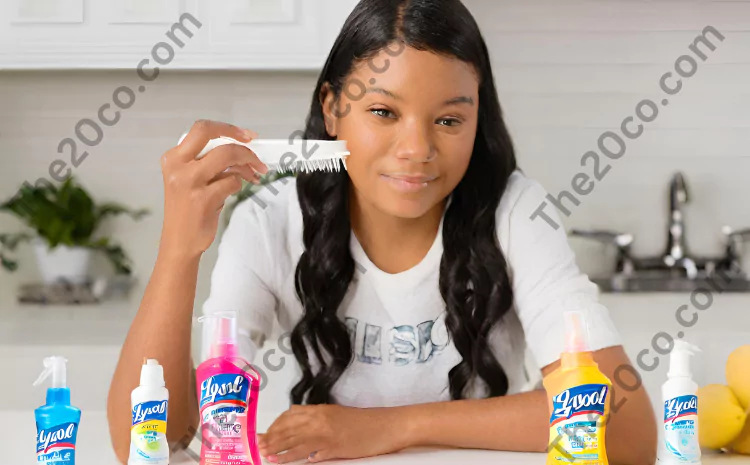While Lysol disinfectant spray can kill many infectious germs, it unfortunately does not kill lice or lice eggs (nits). The CDC also warns against using pesticides to treat lice, as they may be toxic. However, there are safe and effective methods to kill and remove lice at home.
Key Takeaways
- Lysol should not be sprayed directly on hair or skin to treat lice
- Combing and brushing are best for mechanically removing lice after chemical treatments
- Soaking combs/brushes in rubbing alcohol or lice treatment can disinfect between uses
- Shampoos containing proven pesticides can kill lice, but take time to work fully
Understanding what does (and does not!) work against difficult lice infestations is key for effective removal. Read on for science-based, safe advice.
Dangers of Using Lysol and Pesticides Against Lice
When faced with an itchy lice infestation, it’s tempting to reach for the strongest chemical solutions. However, caution is warranted.
The active ingredients in many common disinfectant sprays and cleaners, including Lysol, have not been scientifically proven to kill lice or nits.
While they can disinfect surfaces, applying these pesticides directly to human hair and skin comes with health risks, per the CDC:
- Skin and eye irritation
- Asthma exacerbation from fumes
- Even seizures and death if accidentally ingested
For these reasons, Lysol and similar pesticide sprays should never be used directly on people to treat lice. The dangers outweigh any ineffective treatment benefits.
Evidence-Based Ways to Effectively Kill and Remove Lice
If sprays like Lysol don’t kill lice, what does? And how do you fully remove the parasites once deceased?
Here are medically-recommended tactics to break lice infestations:
Kill Live Lice with Chemical Shampoos
While not a quick fix, shampoos containing insecticides shown to kill lice, like permethrin or pyrethrins, remain a mainstay.
However, it takes up to 12 hours for these chemicals stop lice from moving or feeding so eggs aren’t viable. Be patient and allow the treatment to fully work before combing out!
Loosen Nits and Remove Lice Mechanically
Once lice are deceased post-chemical treatment, nit combs and brushes excel at mechanical removal:
- Use a lice comb to systematically check sections of hair from root to end
- Gently remove nits by sliding a comb “tooth” under them
- Avoid damaging hair by working in small sections vs. yanking
- Follow with a bristle brush to remove stray nits
This combing and brushing process is key, chemical treatment alone won’t physically clear lice!
Disinfect Combs and Brushes Between Uses
To prevent lice spread while combing out multiple family members:
- Soak combs and brushes for 1 hour in rubbing alcohol or chemical lice treatments
- Or, soak overnight (8+ hours) in very hot, soapy water
This kills any stray lice/nits so tools don’t spread the infestation.
| Treatment Stage | Method | Notes |
|---|---|---|
| Kill live lice | Medicated shampoo | Takes 8-12 hours to work |
| Mechanically remove deceased lice/nits | Nit comb + brush | Comb hair section-by-section |
| Disinfect combs/brushes | Soak in alcohol or hot, soapy water | Prevents spread |
Continued Vigilance Against Re-Infestation
Be sure to re-check for lice 5-9 days after treatment since no method is 100% effective alone. Continually comb, wash bedding on hot, and limit head-to-head contact moving forward.
Catching re-infestations quickly can halt another outbreak and nasty itch cycle in its tracks for good!
In summary, while Lysol does not treat lice, proven pesticide shampoos followed by diligent nit removal offer chemical and mechanical tactics for winning the battle against lice long-term.

